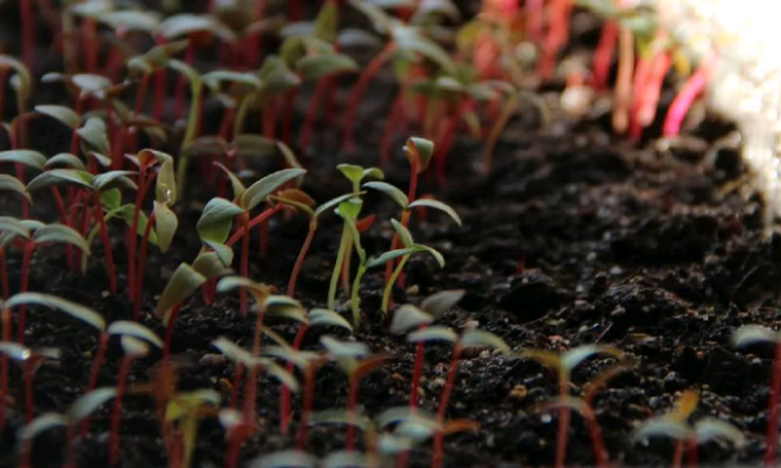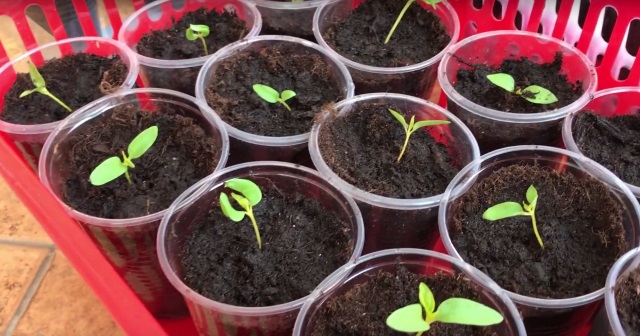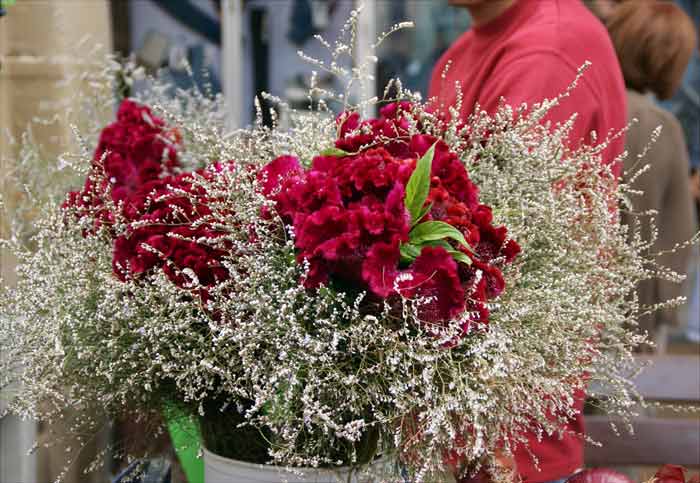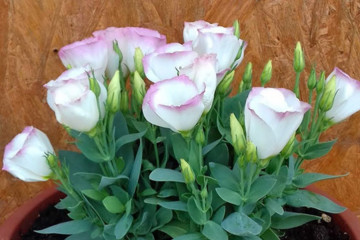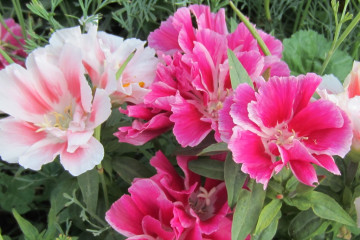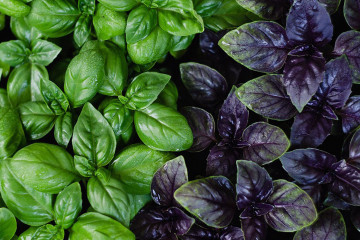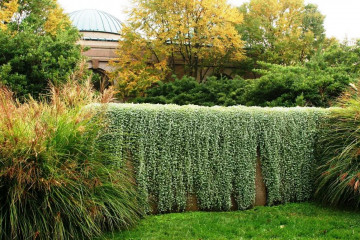Celosia comb - growing from seeds at home
Content:
Fiery, flaming - this is how the name of this bright flower is translated from Greek. Celosia comb will decorate a suburban area, a balcony, a flower bed. In nature, there are perennial plant varieties, but only annual representatives of the species are suitable for the climatic conditions of Russia.
Description of the silvery comb celosia (celosia cristata)
Celosia cristata is a representative of the Amaranth family. Under natural conditions, the flower grows in South China, East India, Africa and America.
The maximum flower height is 45 cm. The stem is erect, branched. The leaves are wide, elongated.
Popular varieties and varieties
More than 60 plant species are known. The most popular are the following varieties.
- Imperialis
Low-growing plants (no higher than 25 cm) with dark red inflorescences. The leaves are purple with red veins.
- Impress
More often than other varieties, it is grown in the middle lane. The height of the flower is 20-25 cm. The scallops are bright burgundy, the leaf blades are dark purple.
- Coral garden
Height - 25 cm, the mix is formed from inflorescences of different shades, from orange to pink. The flowering period is July-September. Growing celosia coral garden from seeds is the optimal and way of plant propagation.
- Atropurpurea
The main distinguishing feature of the variety is light green leaves with pink veins. The inflorescences, like the previous varieties, are purple.
Seedling planting
Cultivation of crested comb is usually not a problem. In Russia, the summer is short, so they choose the seedling method.
Time to board
Planting times vary by region. In the middle lane, it is time to sow flowers in mid-March, in the northern regions - in April, in the south - in February.
Choice of capacity
Celosia seeds are very small, so it is more convenient to use one container. The best option is plastic containers or wooden boxes. There must be drain holes at the bottom.
You can immediately plant the seeds in separate cups or pots. The work is very painstaking, but then all that remains is to plant the plants in open ground, bypassing the dive stage.
Soil and seed preparation
The flower prefers loose, fertile, slightly acidic soil. You can purchase a ready-made all-purpose potting mix or make your own. For high-quality soil you will need:
- Sod or leafy land (3 parts).
- River sand (part 1).
- Humus (part 1).
- Perlite or vermiculite (1 part).
The substrate must be disinfected 2-4 weeks before planting the seeds. To do this, it is calcined in the oven, and then treated with biofungicides, for example, ordinary potassium permanganate. And 2 tablespoons of ash will reduce the risk of developing fungal diseases.
Landing
Step-by-step instruction:
- Cover the bottom of the container with a drainage layer (1 cm).
- Fill up the soil, leaving 2 cm to the edge.
- Moisten the substrate with warm water.
- Sow seeds. They must not be buried or covered with earth. It is enough to press down slightly.
- Spray from a spray bottle.
- Cover the container with glass or plastic.
Seedling care
Actions to be taken after planting seeds:
- Remove cover for 30 minutes daily. When the seeds germinate, the cover must be removed.
- Protect seedlings from direct sunlight.
- Provide optimal temperature conditions. For seed germination - 22-25 ° C, after - 17-20 ° C.
- Avoid drafts.
- Moisten the soil in a timely manner. Watering should be moderate. Drying and waterlogging should not be allowed. Excess moisture leads to root rot.
- Seedlings are fed twice - 10 days after the pick (or the appearance of 2 true leaves) and a week before planting in open ground.
Dive
You can plant flowers in separate containers after 2-3 true sheets appear.
Detailed description of the procedure:
- Water the plants abundantly in 3-4 hours.
- Pour drainage into each pot, fill with soil.
- Very carefully pick up the sprout with a wooden spatula.
- Place the seedling in the hole in a new container so that the roots do not bend.
- Sprinkle with earth, compact slightly, water.
Planting in a seedless way
You can also grow a flower using a seedless method. It is permissible to plant celosia directly into the ground. The seeds are resistant to frost, so they can be sown in late October or early spring.
In order for the earth to settle, the bed should be prepared in a week. The depth of the rows is 5 cm. The seeds are mixed with sand and sown very rarely. The rows are carefully closed and moistened. It is advisable to sprinkle on top with a thin layer of humus.
Care features
Celosia is planted in open ground at the end of May, when the threat of frost has passed and warm weather sets in. Plants are planted at a distance of 15-20 cm from each other.
Site requirements
For the flower, choose a sunny, well-drained area, sheltered from the wind.
What is the plant afraid of
Weaknesses of culture:
- The flower does not tolerate fresh organic matter.
- Even minimal frosts can destroy the plant.
- Excessive moisture can lead to the death of cellosis.
Watering
Scallop celosia, which is grown as a home flower, requires regular watering during growth and flowering. The earthen ball must be soaked completely. The water must be emptied from the pallet.
In the open field, flowers should be watered as the soil dries. The lack of moisture is signaled by drooping leaves.
Loosening
After each watering or rain, you need to loosen the soil. The procedure accelerates the flow of air, moisture, nutrients to the roots. Without loosening, plant growth will slow down.
Top dressing
You need to feed the flowers no more than once a month. 15 g of the finished mineral mixture is dissolved in 5 liters of water.
Flowering comb cellosis
The flowering period is July-October. The flowers are bright: red, orange, yellow, pink. The upper edge of the buds is sinuous, thanks to this feature, the celosium flower is called the cockscomb.
During flowering, the care of the plant does not change. If necessary, you can increase watering.
After the celosia has faded, you need to collect the planting material.
In the fall, withering inflorescences are cut off. During the day, they are kept in a dry, dark place to dry completely.It remains to gently shake the "box" and collect the spilled seeds.
Celosia in winter
The climate of Russia does not allow growing a flower like a perennial, so in autumn the plants are destroyed. But it is not at all necessary to throw away the whole. You can cut the most beautiful specimens, peel off foliage, tie and dry in a dark, ventilated area.
Possible growing problems
Improper care is the main cause of plant diseases.
- Pests
Insects rarely settle on cellosis. Sometimes the flower can attack aphids. Insecticides can easily deal with the pest.
- Diseases
The most common disease of comb cellosis is the "black" leg. The disease develops due to waterlogging. At the first symptoms, it is necessary to stop watering, loosen the soil by adding wood ash.
Signs of improper care
The fact that a plant is sick or has been attacked by insects is signaled by the following signs:
- Blackness on the stem.
- Rolling leaves.
- Thinning of the stem, wilting.
- Insect colonies on the back of the leaves.
Celosia comb is a peculiar, spectacular flower. Thanks to its bright inflorescences, it is often used in landscape design. The cockscomb can be combined with all annuals. In addition, this plant is easy to care for, the main thing is to prevent waterlogging.

